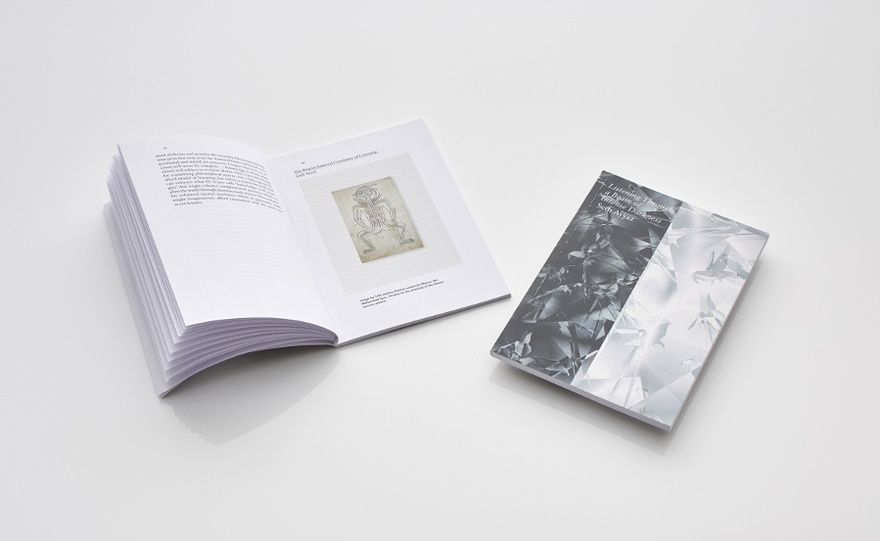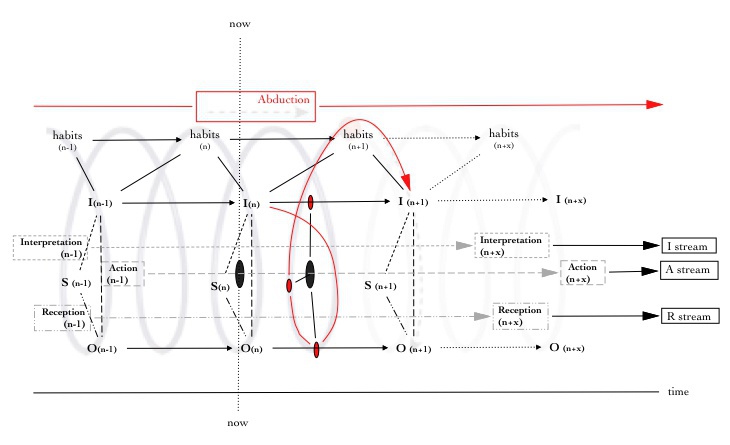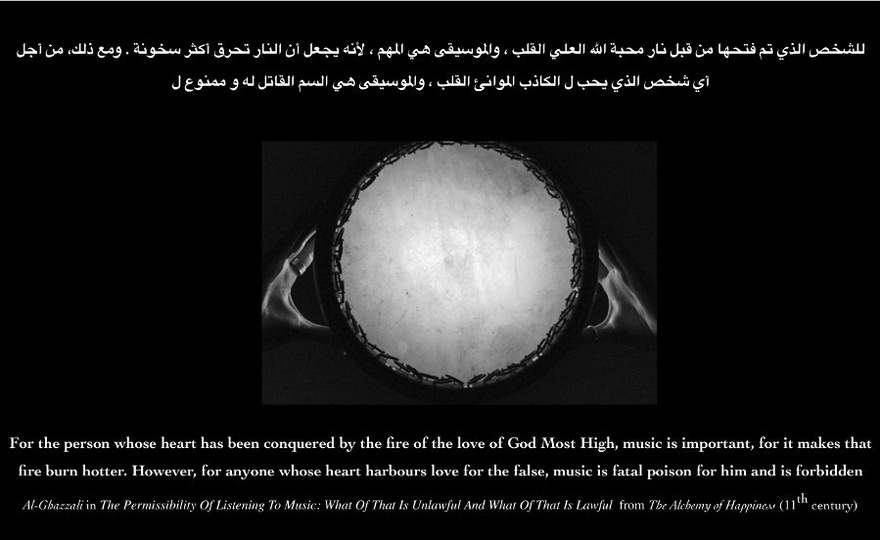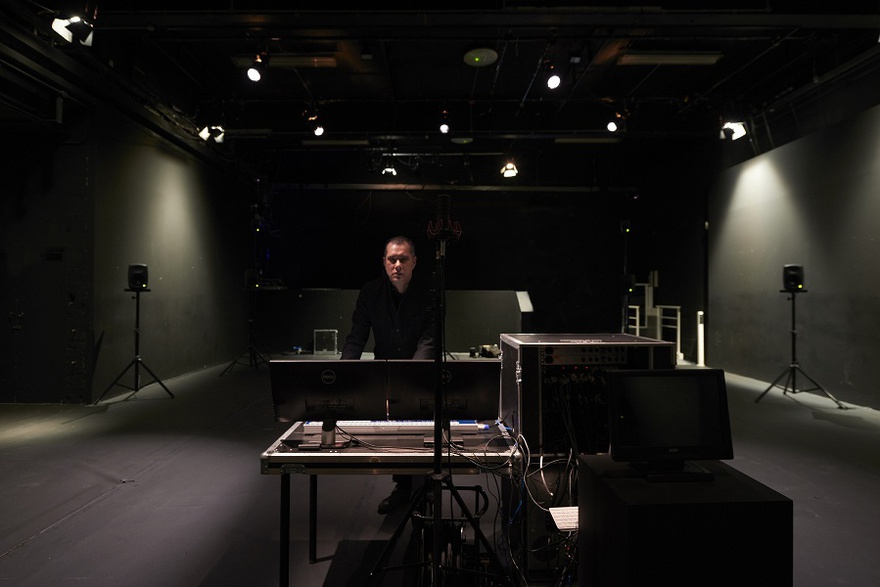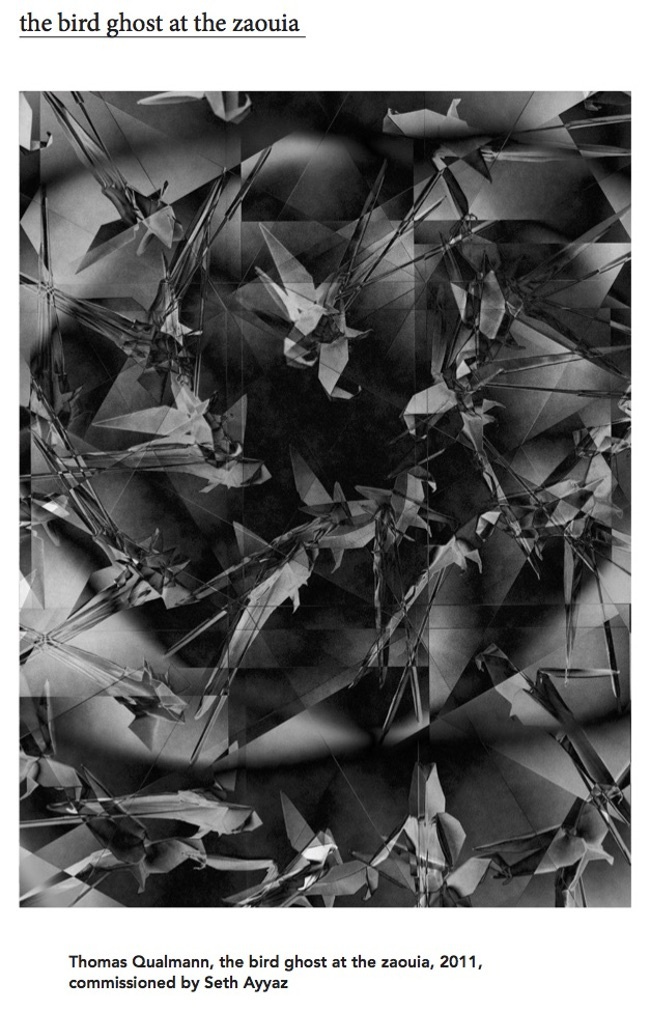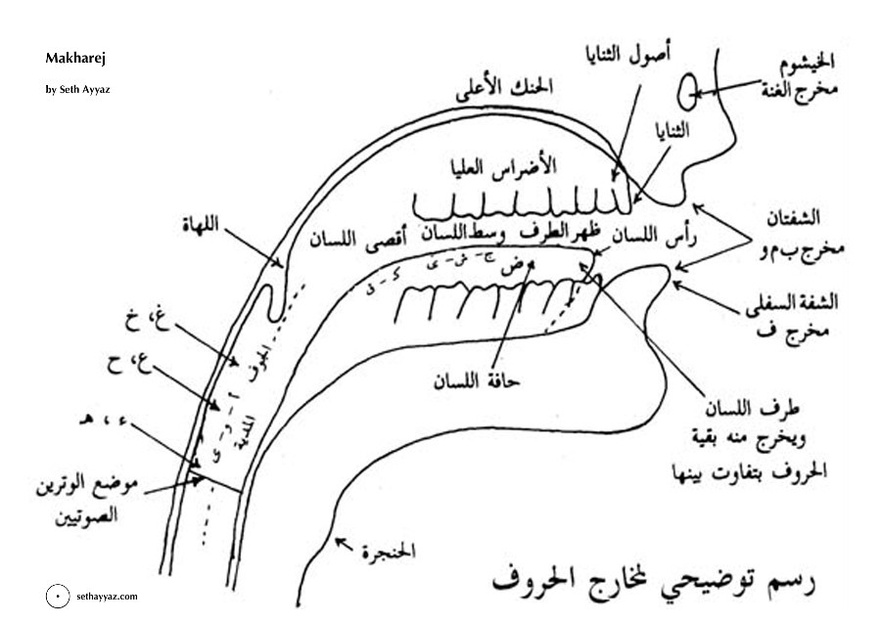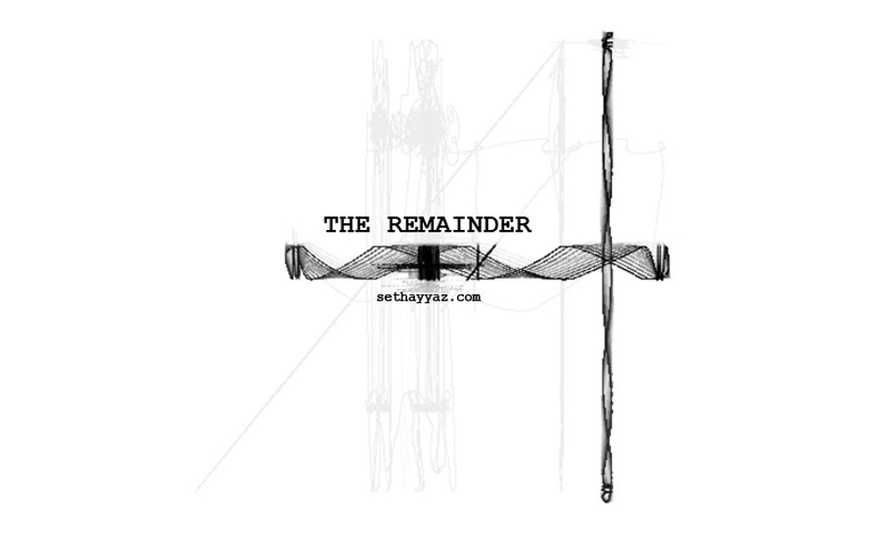Projects
On The Admissibility of Sound
Contained within Listening Through A Beam of Intense Darkness were three electroacoustic works forming a triptych, collectively titled On The Admissibility of Sound. This set of interrelated sonic works form an auditory zillij and can be thought as a pattern made of interlocking mental machines that inquire into listening, interpreting and acting in their different ways. Their focus turns around current constructions of alterity and experimental Middle Eastern sonic practices, informed by my developing notions of cognitive opacity/translucency, the theme of 'listening without a listener', and the problematics of an 'Islamic sonic-social'.
The core of my biopsychosocial approach to listening is grounded in a thoroughly materialistic ontology of music and sound. Listening is part of a comodulating helix where reception-interpretation-action are abductively linked, arising from the conditions by which we have a world in which we ennact listening. In short, we are nothing but emergences from matter-in-motion in which the corporeal architecture of physical bodies, psychological and socio-cultural domains fold into and through one another. For the visually oriented it might be something like this:
I mention this because, perhaps somewhat paradoxically, while taking an archly materialist perspective, I admit to being captivated by the irrational, mystical and transcendental habits of mind that we inherit from historical and religious practices (think the rituals of sama' and dhikr where we might believe that we are in contact with a divine cause, an originating emanation). Beyond this, we seem to have an apparent need to understand ourselves in relation to some great 'Other' – be it a god, a totalizing market or some other idealization. I think this is particularly germane at this moment in geopolitics.
Musicking or sounding accesses an affective contagion through a peculiar mode of attending. It potentially annihilates the self and all the identity trappings and politickings that go with it. And this has been explored and actualized nowhere more so than in the Islamic sonic traditions and medieval theorists. But, as the neurophilosopher Thomas Metzinger suggests, no one ever was, or ever had a self. What we 'have' as selves are emergences from these complex biopsychosocial architectures. Listening places us into the midst of a world that is happening, it seeps into us, and we reach out through it.
On the Admissibility of Sound
Know that God Most High has a mystery in the human heart. It is hidden in it just as fire in iron; when a stone is struck on iron the mystery (fire) is made manifest and plain. In the same way listening to fine music (sama i khush) and rhythmic song (awaz i mawzun) excites that essence in the heart. Something appears in it without a person's having any choice about it. The reason for this is the relationship that the essence of every human being has with the World of the Sublime: that which is called the world of spirits. …. For, every beauty, excellence, and proportionality that is perceived in this world is all the fruit of the beauty, excellence and proportionality of that world.
(Al Ghazali On Listening to Music, Kazi Publications, Inc. 2003)
Listening to music is fatal poison to those whose hearts are impure. While I fundamentally disagree with such essentialism and binary moralizing, what I find interesting is Al-Ghazzalli's certainty that music is affecting; we are affected by it. It is a form of contagion that transforms and transmutes what it touches. His foundational text sits within the traditions of Kimiā (alchemy) – the highest of the occult sciences (including magic and astrology) – where everything is a manifestation of divine spirit, everything belongs to Kimiā. But alchemy turns base material into gold. It is a compositional science. For me, Al Ghazali's warning transmutes into a cautionary note regarding belief in essentialism and the transcendentally ideal subject which, beyond this Islamic context, continues to shadow thinking sound after Meillassoux.
Beyond this Transcendental Idealism stalks the spectre of a pure world of forms transmitted from an originating light, a 'necessary' cause. We are condemned to one side of a split between subject and object, self and non-self, thought and being. It is a state of mutually excluding contrast – a binary opposition of halal-haram, lawful-unlawful listening. We are caste into illumination or into darkness.
My position is that listening is never a passive perception, but rather a performative practice, and exploratory action. It engages the world through a peculiar mode of focusing attention, it recruits intentionality and is sensitized to sound and music as agentive interlocutors.
When listening is applied to particular places and circumstances, this exploratory receiving-interpreting-acting expands, it pulses causally outwards into the world, and shapes that world in an oscillation between centripetal and centrifugal neurodynamic processes.
Applied to the sound marks and ambiences of the geopolitically charged spaces of Islam, inhabiting the Middle East, the global north and south and the interstitial ubiquitous no-space of networked societies, listening must acquire a critical edge.
The title of the triptych betrays a concern with the unseen, unspoken and potentially revolutionary problematics of interrogating power in the Islamic sonic-social. Listening operates within these pieces to reveal and contest regimens of power, aiming to disassemble the pronunciation of the divine authority of the Arabic letters (Makharej, 2009), number (The Remainder, 2013) and the religious permissibility of music and sound (the bird ghost at the zaouia, 2010).
In all three pieces contemporary electroacoustic techniques of sound analysis, synthesis and spatialization are brought to bear on 'traditional' Islamic musical concerns such as the recitation of Qur'an, adhan, voice, the admissibility of music, number theory applied to maqammat (pitch) and iqaat (rhythm).
My notion of the 'Islamic sonic social' tries to capture the idea that sound is both constitutive of and constructed by (amongst other things) social processes. And that contextually, this can be specifically understood in relation to Islamic historical – cultural – religious practices and ideas. An obvious example is the function of the adhan which can be considered a potent marker of difference and disciplining power. There is no single 'Islamic sonic social' of course – Cairo is quite different of course to Jogyakarta, or to Bradford, or to the romanticism of Jihadist videos. I am not simply referring to characteristic sound marks found in certain religious contexts taken in by the ears. It is also a way of listening, a sensibility, a habitus. Listening is inscribed or fulfilled by expectancies, libidinally invested by phantasy and projection.
In this triptych, my listening habitus (as I grew up in a British Muslim family) is both inside and outside of a notional Islamic sonic-social. I am interested in exploring the world through electroacoustic means, in critically intervening, often with the intention of teasing out, or amplifying problematics that might then present questions to the listener.
the bird ghost at the zaouia
the bird ghost at the zaouia is a mutating work for multi-channel loudspeaker diffusion. It critically engages at the intersection of debates concerning 'world music', the ethics of the microphone and field recordings, and the aesthetic appropriation of sonic fields into sound art practices. Specific culturally and historically situated Islamic performance practices (mostly adhan, dhikr, zar and lilat) were recorded, re-routed, and re-sited by transplantation into a new sonic assemblage.
the bird ghost at the zaouia is a composed machine for listening that reconfigures an Islamic sonic-social. It can be encountered as installation or in a concert listening environment. It is a network of fragments whose temporal sequencing undergoes variation. The germinal strands of the fragments were initially identical. Each sound underwent evolution and transformation through a series of algorithmic processing networks, with selections and survival of material into the next stage made by listening. At times, recurrences have a familial resemblance but often they diverge markedly so that, to the ear, they become entirely different entities. As memory can be fallible and fictitious, so too is the way I have approached this material, teasing out any 'essence', to undermine the 'authority' of the recording. This leads us to arrive at a subjective re-experiencing of the sounding presences. Like memories, these fragments are traces of past; residues, filtered, and reassembled. Each time the work is listened to it is different, perceptually framed by what comes before and what follows.
The work intervenes into recordings made at various Zaouia (Sufi shrines), mosques and religious spaces in Morocco, Egypt, Syria, and Lebanon while attending a series of Lilat, Dhikr, or Zar ceremonies between 2002 and 2011. At the request of the respective religious leaders, no 'musical' material has been used. I found and recorded birds, resonant tails, breaths, overheard conversations, adhan and extraneous sounds floating in, sounds that were outside of or left behind, and not framed as part of 'music'. These requests carried normative pressures, which in the cultural context have roots in longstanding debates within Sharia law, regarding the place and permissibility of sound and music. These are described by the musicologist Kristina Nelson as the 'sama' polemic'. To paraphrase, two poles operate – a (broadly) Sufi influenced perspective that argues for music, under the correct conditions, to be itself a spiritual and prayerful practice. Conversely there is a belief in a puritanical perspective that holds that music of any kind, is intrinsically blasphemous. According to one's position within the polemic, music exists either as virtue or poison.
These debates have parallels with exchanges between schools of sonic practitioners regarding norms, ethics and listening modes appropriate to the use of recorded audio, along the sound object compared to the soundscape axis. Reflecting upon these dual contexts, I became interested in an ethico-aesthetic exploration of the lines of demarcation between music and non-music, beginning with the aural residuum of the recorded and religiously freighted spaces.
Makharej
'....in the emptiness, I disassembled a letter from one of the ancient alphabets, and I leaned on absence...'
Excerpt from 'In Her Absence I Created Her Image' by Mahmoud Darwish, in The Butterfly's Burden, 2008.
The Breath of the All-merciful: 'Just as the Arabic alphabet has 28 letters through which the names of all things may be pronounced, so the cosmos has 28 basic 'letters' which combine to produce all created things. Each letter of the alphabet issues from a particular point, known as the 'place of articulation' (makhrej) within the vocal apparatus. Depending on how the breath passes through the throat and mouth, that is, which 'place of articulation' is employed, letters are produced which may be guttural, velar, palatal, dental, labial and so on.'
Ibn al-Arabi, (circa 1230) 1989: p. 127
In the current socio-political contexts of al Sahwa al Islamiyya (New Political Islam), the word of law and the role of technology have come to the fore as various media such as tapes, CDs and mp3s have been adopted in the inscription, interpretation and dissemination of religious and political sermons. These sermons may be broadcast publicly much like the adhan, particularly on Fridays, or may be recorded and disseminated as increasingly autonomous sonic assemblages. These circulate and differentiate into competing styles that articulate and mark competing ideologies. Such materials are inscribed with notions of self-improvement, piety, and engagement with the eternal. These technological mediations are an increasingly central means by which an 'ethically responsive sensorium' is cultivated and honed.[1]
Makharej engages a plurality. There exist places of articulation, rather than just one, and this can be engaged by electroacoustic means. This contestation was personally doubled. In the current media context of systematic misrepresentation of Islamic cultures, I felt a need to respond. In the context of my own opposition to both western Imperial and Islamofascist absolutes, the status of the 'divine' language as something sacrosanct and beyond critical thinking was a subject that I needed to engage. Specifically by exploring the theme of ownership of the makharej, the piece moves between the prescribed 'correct' articulation of the Arabic letters and exploration of the sonic materials latent within their (dis)embodiment as sound.
Transformations of pronunciation produces (for the suitably equipped listener) distortions and comments upon their semantic, linguistic, cultural, and religious aspects. Makharej investigates the physical production of the spoken letters, the role of the body in being able to extend sounds, the kinds of psychological charge that could be achieved, and the social implications or meanings that could be activated.
Compositionally I wanted to move in two directions simultaneously, creating two parallel worlds. One was somatic and proximate to the voice the symbol of embodiment, the other remote; an evacuated, elemental, disincarnate detritus. A suite of machine-listening analysis algorithms extracted perceptual information from the voice, to arrive at a set of sparse representations that graphed the invariant features of each letter 'correctly' articulated. These graphs were manipulated and transformed and used to drive synthesis processes to arrive at the 'electronic' scenes that accompany each letter. Symbolically and metaphorically this 'deformation' deviates from the accepted formalities, to challenge cultural and religious orthodoxies, and to lay a personal claim to the significance of the beauty of the language.
With respect to Meillassoux's correlationist critique, these two elements might also extend to other dualities, such as the subjective (embodied) and objective (the disincarnate or anonymous). The technique of 'object feature projection' is an attempt to investigate the material realm independent of phenomenology, and to bridge the adjacency between listeners and acoustic events.
The Remainder
Allah's remainder (is) best for you if you were believing, and I am not with a protector/observer on you. Qur'an 11:86
But who is this Allah, who leaves behind a remainder? Is he other than the Allah, the One, the Almighty, and the Allah of La Ilaha Illa Allah? Surely, there can never be any remainder for Him.
Originating in medieval Islamic mathematics and related debates between the schools of Sharia, 'the remainder' is the number left over, after all the operations of division have been completed; it is the smallest of the divisor, dividend and quotient and cannot be divided further. This remainder is contentious. That which is left over threatens the wahdaaniyya, the Unicity of God. Since there is only one substance, one God, nothing may remain. For others, that which remains points to something hidden, unrevealed.
Within the Qur'an are combinations of letters (such as alif-laam-miim, ya-seen, Ha-miim), which appear alone without comment or context. They are remainders that stand apart within the text. Known as Al Muqattaat (the abbreviated letters) they are sometimes referred to as 'the keys' and have been the focus of debate and mystical interpretation. They have been taken as openings into transcendental experience.
In The Remainder a number of ideas entwine to construct the piece: the division of number, the hidden, and a historic issue on how to organize sound in 'musique concrete'. Number and 'the keys' are taken as elements that point to an exit from, and remain outside of language.
Towards the beginning of Pierre Schaeffer's In Search of Concrete Music (A la recherche d'une musique concrete, 1952), Schaeffer laments his lack of success in imposing metrical compositional techniques onto the materials he had amassed. These sounds culled from the world did not fit into the traditions of scale and rhythmic bars. This led to a rejection of the grid to which time and pitch is habitually quantized.
I was interested in the organization of material using a hidden structure operating outside of the gestural implications inherent at the level of the sound objects. The sonic surface of The Remainder is a projection from an underlying mathematical exponential grid structure – using auditory objects such as breath, santur, daf and non-standard synthesis techniques, the structure simultaneously generates and is obscured by the surface as objects form, fuse and transform. Working with the synthesis language Supercollider, the piece uses machine-listening techniques to analyse and transform auditory objects, driving synthetic processes that transform and shroud them.
A matrix structures the division of time, frequency and other synthesis parameters according to exponents of the number seven. The resolution of the matrix reduces over successive sections until the final singular division of a single daf drum stroke – the dum. Beginning with a parametric matrix of 77 the opening deals with minuscule particles, creating spatialized nebulae. The pulses and wavelets are so fine and fast as to exceed our capacities to perceive individual events. They merge with 'nafas' (breath/soul) that might symbolize the originating impulse to life. Over the following sections the matrix reduces (from 76 to 70) as it parameterizes the algorithmic synthesis processes and temporal flows, down to the final statement of a seven beat (aksak), dance rhythm estranged from the body, terminating with a unitary strike. Like the daf, the santur is a charged symbolic instrument, and was performed with extended techniques and 'enhanced' through physical modeling that detunes the original (segah) maqam with unnatural harmonics derived from divisions of 7.
This work forms the final part of a triptych; it is what is left over, it implies a third point, a triangulation that exceeds binary thinking. The Remainder was composed for Maerz Musik Festival, Haus der Berliner Festspiele 2013.
A full discussion of these works can be found here.
[1] C. Hirschkind, 'The Ethics of Listening: Cassette-Sermon Audition in Contemporary Egypt' in American Ethnologist 28.3 (2001): pp. 623-649


